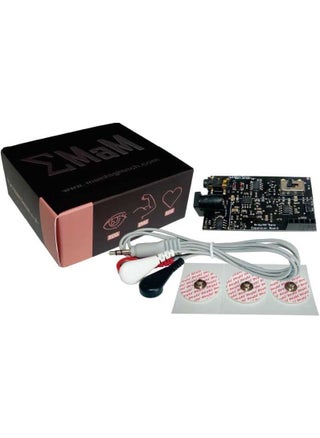Free & Easy Returns
Best Deals
| Type | Sensor |
MaM Sense allows developers to process 3 different types of signals with a single card: EOG, ECG and EMG. All three signals are measured as the desired mode for the selected signal by a three-way switch. Then, the board is connected to the analog to digital converter to obtain output and process the digital signal. The sensor can also be used as Arduino. Since the Nano expansion board is mounted on the Arduino Nano sensor, it provides an output signal to the A7 port of the Arduino and provides power to both itself and the Arduino Nano through a common DC jack. Additionally, Arduino codes developed by engineers have been shared to help developers. You can access Arduino codes.
Bioelectric signals are the total electric current produced by the electric current on the tissue, organ or cell. Although biopotentials differ depending on the tissues and organs from which they originate, they generally have common signal characteristics such as low amplitude (10 μV-10 mV) and low frequency (0-200 Hz). Special electrodes and electronic systems are used to obtain these signals for clinical purposes. Systems used in this field are generally named after the target organ (such as Electrocardiography, Electroencephalography). Electrodes, amplifiers, signal adapters and signal imaging devices are used to measure these potentials, which have very small amplitudes. Surface electrodes attached to the skin are widely used as electrodes (EOG, EMG, ECG) because they do not damage tissues. Sometimes it may be necessary to use a needle electrode to make more local measurements. Since the measured signals are very small, recording problems are encountered at every stage. Problems such as skin conductance, body movement, electrode noise, interference from the network, and electromagnetic wave interactions further deteriorate the quality of the already small signal.
Although it is possible to measure biopotentials in every tissue in principle, today ECG, EMG and EOG recordings are most commonly performed for diagnostic purposes. EOG is a method of recording the electrical potential between the cornea and retina with the help of electrodes placed around the eye. EOG signal amplitude is 0.05-3.5mV and frequency is 1-10 Hz. Electromyography (EMG) is a technique used to evaluate and record the electrical activity produced by skeletal muscles. EMG signal amplitude is 1-10 mV and frequency is 0-500 Hz. Electrocardiography (ECG) is a method used to measure electrical activity through the heart using external (skin) electrodes. ECG signal amplitude is 0.5-1 mV and frequency is 0.1-40 Hz. The bioelectric signals in question are first amplified to obtain a gain of 101 using a differential amplification circuit, and then filtered using a high-pass filter in accordance with the frequency band of the signal. In this filtering stage, the cut-off frequencies of bioelectric signals were set to 0.1 Hz, 20 Hz and 0.3 Hz for EOG, EMG and ECG, respectively.

